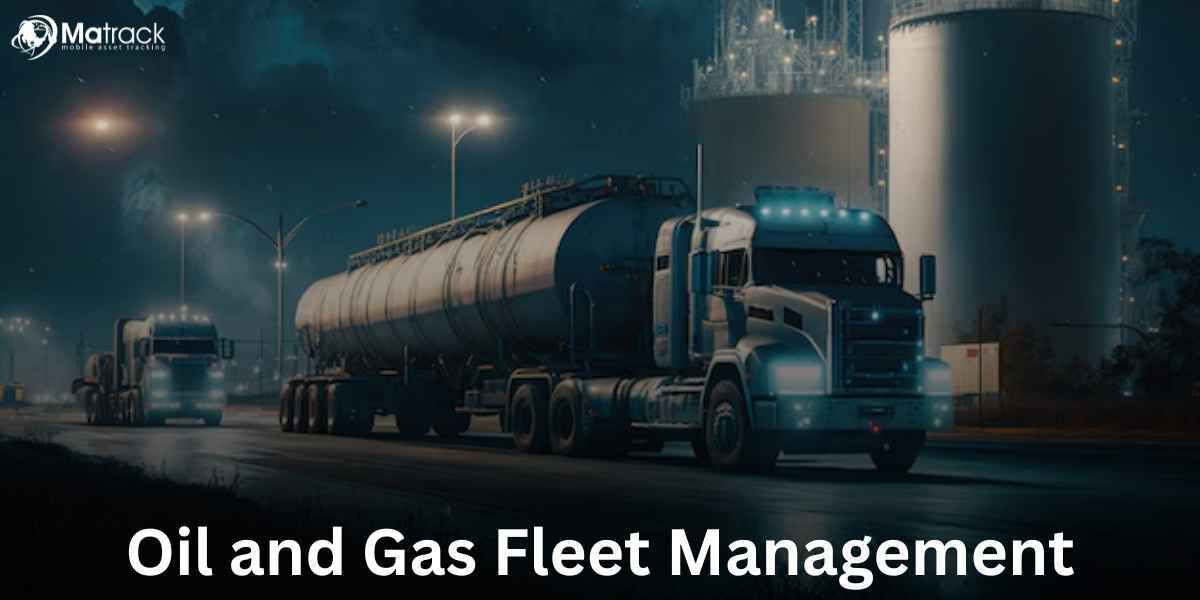Key Takeaways:
- Oil and gas fleet management improves control over field assets by aligning vehicle use with operational demands.
- Effective implementation relies on tracking systems, structured maintenance, and location-specific logistics planning.
- Best practices focus on technical readiness, environmental conditions, and field-specific safety protocols.
- The balance of operational benefits and real-world challenges defines long-term fleet performance and risk exposure.
What Is Oil And Gas Fleet Management?
Oil and gas fleet management is the control of vehicles and equipment used in exploration, drilling, and transportation. It focuses on tracking, maintaining, and optimizing asset performance across field operations.
This process includes asset utilization, fuel consumption, and safety compliance. These controls reduce downtime, operational risks, and logistical inefficiencies.
Things You Need to Consider For Oil And Gas Fleet Management
- Vehicle allocation: Assign trucks and support units based on site layout, terrain type, and drilling requirements.
- Hazardous transport: Manage tanker operations with strict protocols for pressure, temperature, and spill prevention.
- Service fleet readiness: Keep wireline trucks, mobile maintenance vans, and emergency units available near active wells.
- Pipeline patrol: Track inspection vehicles handling leak detection and line safety using real-time GPS.
- Drilling support: Coordinate mud trucks, water carriers, and supply units with live rig schedules and crew shifts.
- Remote refueling: Plan diesel delivery routes for fleets operating in off-grid or hard-to-reach oilfields.
- Crew transport: Schedule worker shuttles and vehicle transfers in sync with rig shift changes and offshore access points.
- Downtime tracking: Log inactive hours for each vehicle at the site to diagnose problems and cut recovery delays.
- Load control: Match fleet capacity with equipment and chemical weights to avoid overload and reduce wear.
- High-risk zone checks: Run safety inspections before entry into flammable, corrosive, or heat-exposed operational areas.
How To Implement Oil And Gas Fleet Management?
Set Objectives
Start by defining performance targets for fleet uptime, fuel use, and field support efficiency. These targets give direction to operational planning and technology decisions.
Use specific KPIs like service response time, route completion accuracy, and mechanical failure rates. These metrics keep progress measurable and operations accountable.
List Assets
Catalog every vehicle and mobile unit by function, region, and operating status. Include tankers, utility carriers, inspection vehicles, and crew transports.
Knowing where each asset is and how it’s used helps prevent overlap, ensures balanced distribution, and supports scheduling accuracy.
Install Tracking
Install assets with telematics systems to gather real-time information on movement, status, and driver input. This data gives visibility across difficult and distant terrains.
Tracking tools improve coordination and reduce the risk of misuse, delays, or route inefficiencies, especially in active or high-risk zones.
Plan Maintenance
Develop structured service intervals for each asset based on actual workload, not just time or distance. This helps anticipate wear rather than reacting to it.
Use digital tools to log completed tasks, component replacements, and inspection results. These records streamline scheduling and improve fleet readiness.
Use Software
Implement a fleet management platform that connects tracking, maintenance, and compliance features into one interface. It must support multi-location operations with live updates.
Centralizing data avoids miscommunication between teams and ensures timely, data-backed decisions from headquarters to field bases.
Train Crews
Deliver focused training that matches vehicle type, route condition, and operating risks. Training should address current field challenges, not just generic policy.
Equipping personnel with hands-on knowledge minimizes errors, protects vehicle integrity, and ensures safety under pressure.
Optimize Logistics
Design transport routes using actual load data, rig timelines, and fuel availability. Prioritize routes that reduce empty returns or risky detours.
Well-planned logistics increase vehicle output and make it easier to sync deliveries with drilling stages and critical support needs.
Ensure Compliance
Maintain clear protocols for inspections, documentation, and hazard transport rules. These include load checks, driver hour logs, and emergency documentation.
Keeping up-to-date with changing field regulations ensures that operations run without legal interruption or asset seizure.
Track Metrics
Review performance reports that show asset availability, fuel consumption trends, and service efficiency. Use that data to improve how resources are deployed.
Spotting underperforming units or late maintenance lets you correct small problems before they impact field timelines.
Refine Operations
Conduct operational reviews using recent metrics and crew input. Refine decisions about vehicle rotation, equipment upgrades, or training gaps.
This ongoing adjustment ensures the fleet adapts to new site demands, seasonal conditions, or drilling activity levels.
What Are The Best Practices For Oil and Gas Fleet Management?
- Cold Start Handling: Prepare engines properly before running in freezing zones to prevent internal damage and fuel thickening.
- Right Tire Selection: Use terrain-matched tires to maintain grip, prevent slippage, and avoid unnecessary wear on rough sites.
- Balanced Load Setup: Distribute heavy equipment evenly across vehicles to protect suspension systems and avoid rollover risks.
- Hydraulic System Care: Inspect lifting trucks and pressure-driven rigs regularly to catch leaks or hose failures early.
- Night Shift Readiness: Equip vehicles with strong lighting, reflective panels, and backup visibility gear for safe operation after dark.
- Off-Grid Communication: Use satellite phones or signal boosters in vehicles working beyond cellular coverage to stay connected during field operations.
What Are The Benefits And Challenges In Oil and Gas Fleet Management?
| Benefits | Challenges |
| Improved asset utilization | Difficult terrain and remote locations |
| Lower fuel consumption | High cost of telematics installation |
| Better maintenance scheduling | Frequent exposure to harsh environments |
| Real-time operational visibility | Limited communication in off-grid areas |
| Enhanced safety compliance | Complex load and route management |
| Faster response to equipment issues | Regulatory changes across regions |

